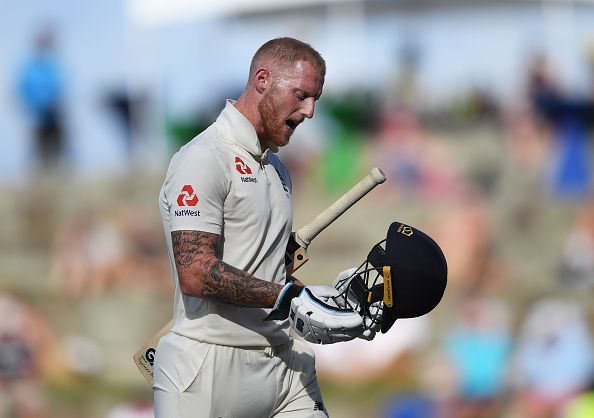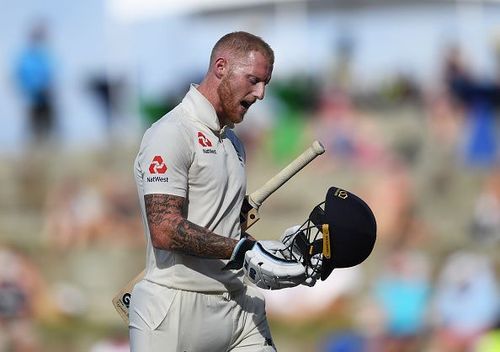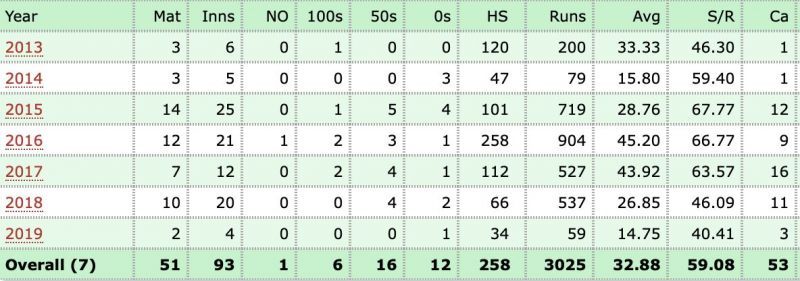
Opinion: What's happened to the old Ben Stokes

The disastrous series defeat in the Caribbean has continued to raise questions about the balance of England’s team.
Despite a raft of batting depth involving Sam Curran batting all the way down at No. 9, they’ve failed to make more than 246 in four innings. While the top 3 has come under justified scrutiny, further problems lie with the teams’ raft of all-rounders, who are increasingly failing to perform with the bat.
One of the most notable of these is with Ben Stokes, who has returned to his position as a vital player following his trial for affray last year. However, to assume all has returned to normal is clearly flawed.
The idea for this article came to me while watching the first test in Barbados, as I watched Stokes block and scratch his way to a 17-ball duck, before following it with 34 off 82 in the second innings. What struck me about these innings was the distinct lack of aggression and intent that Stokes’ showed, and I found myself asking, ‘what’s happened to the old Ben Stokes?’
The Stokes all England fans know has scored the fastest Test hundred at Lords against New Zealand in 2015, as well as the second fastest double hundred in Test history against South Africa. His strike rate prior to 2018 was above 60, yet during 2018 it was a measly 46.09 and 40.41 so far in 2019.
This newly conservative approach doesn’t appear to be serving Stokes well either, averaging just 26.85 in 2018, far lower than his 43.92 in 2017 and 45.20 in 2016 (both at strike rates above 60).
In short, he is now facing similar amounts of balls for fewer runs. Stokes clearly needs to return to his natural game and be given license to be positive and take games away from the opposition, that is his natural game. So why has he changed his ways so dramatically?
Despite being cleared of affray at trial, the fallout from Stokes’ punch up in Bristol saw many demanding him to take more responsibility and grow up.
This has undoubtedly been a contributing factor in Stokes’ newfound conservatism as he has continually controlled his aggression, perhaps for fear of criticism. Yet as we have seen, it is not his natural game and has so far failed to provide results in the past 18 months.
The strong correlation between Stokes’ disciplinary misdemeanour and this dip in performance illustrates its importance, but there are other factors at play.
England’s well-documented struggles to find a solid top 3 mean he has often found himself in situations that fail to suit his game.
England’s current problem of having four No. 6/7 batsmen are synonymous with Stokes’ struggles, as players traditionally regarded as dashers find themselves coming in at 30-3 all too often.
This lack of specialist batsmen has pushed Stokes up to bat at No. 5 in recent times, and his strike rate of 42.37 when batting there shows a remarkably stark change of approach to his 62.96 at his traditional position of 6.

This combination of disciplinary issues and recent problems with the balance of England’s Test team have clearly limited the output of England’s star all-rounder, and it is clearly becoming a growing concern.
There is no reason to believe Stokes is any lesser batsman than prior to 2018, it is merely the way he is deployed and the constant cloud over the infamous Bristol incident that appears to be holding him back.
There is clear danger in encouraging a batsman to be aggressive, with many people blaming England’s test struggles on the attacking nature of their ODI approach.
However, England appears to be losing a hugely dynamic and game-changing batsman who is abandoning his natural game. A similar strike rate to that of famous blocker Cheteshwar Pujara (46.45) in the last year is not the way to get the best out of Stokes.
If England are to get their talisman back in form, he must remain at No. 6 as the man with the license to take on bowling attacks and get back to winning games.
The cloud of the Bristol incident will likely always remain in the back of his mind, but for the England coaching staff, they must seek to bring back the Stokes of old.
England’s recent attempts to transform players into something they’re not (e.g. Bairstow at No. 3) has rarely worked, and the case of Stokes is no different.
If England are going to win the Ashes, they need the Ben Stokes of old to be firing on all cylinders with his natural instinct.
It’s time to put aside this newfound responsibility and bring back the fastest centurion at Lords to his former glories.